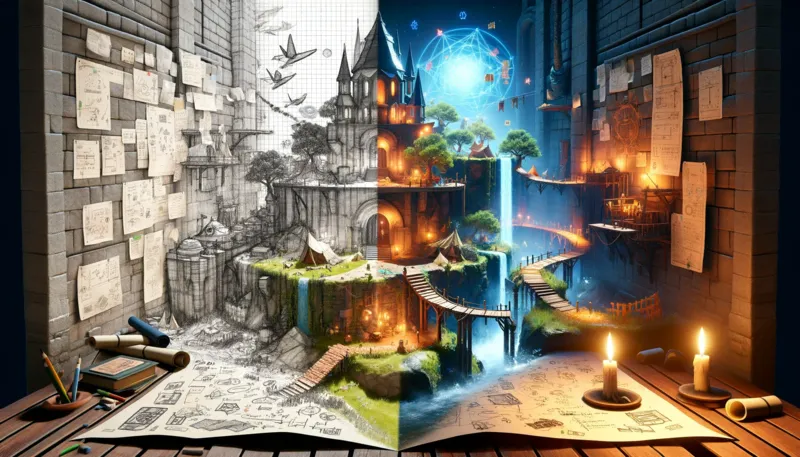Masterful Level Design in Video Games

In the realm of game development, level design stands out as a pivotal element that shapes the player's journey. It's a blend of creativity, technical skill, and a deep understanding of player psychology. Level design isn't just about creating a space for players to navigate; it's about crafting experiences that are engaging, challenging, and meaningful.
The Synergy of Level Design and Gameplay
At its core, level design is about creating interactive stages, maps, or missions within a game that challenge and engage players. Good level design amplifies the player experience, intertwining with game mechanics to tell a story and introduce characters in a way that feels natural and immersive. It's about designing with a purpose, ensuring every element contributes to the overall game experience.
Integration with Game Design and 3D Modeling
The role of a level designer is often confused with that of a game designer, but they are distinct. While game designers focus on the broader aspects of gameplay, systems, and rules, level designers concentrate on the specifics of the game environment, ensuring that it complements the overall game mechanics. This integration is crucial, as the level design must harmonize with the gameplay and story, supporting the intended emotions and interactions.
The evolution of technology has expanded the scope of level design, especially with the advent of 3D modeling. Modern level designers work on creating vast, detailed environments, placing items and enemies, and scripting their behavior in response to in-game events. Tools like Unreal Engine, Unity, and 3D modeling software like Maya and 3ds Max have become indispensable in this process, offering robust features for creating intricate game levels.
Level Design in Classic Games vs. VR
The approach to level design varies significantly from classic games to VR environments. Traditional games, like Super Mario Bros. or The Legend of Zelda, often focused on placing obstacles, power-ups, and enemies on a 2D or 3D map to create challenging gameplay. However, VR games require a different approach, emphasizing immersion and player interaction with the environment. In VR, level design must consider the physical space and how players move and interact within it, often requiring more detailed and interactive environments.
Tips for Aspiring Level Designers
- Understand Player Psychology: Create levels that are challenging yet rewarding, balancing difficulty to avoid frustration.
- Emphasize Immersion: Focus on making the game world feel alive and authentic, even if it's set in a fictional universe.
- Incorporate Playtesting: Test levels with different types of players and use their feedback to refine the design.
- Use the Right Tools: Utilize game engines like Unreal Engine and Unity, along with 3D modeling tools, to bring your visions to life.
Conclusion
In conclusion, level design is a multifaceted discipline that plays a crucial role in game development. By understanding its relationship with gameplay, mechanics, and 3D modeling, designers can create immersive and memorable gaming experiences. As technology evolves, so does the potential for innovative and engaging level design, especially in emerging platforms like VR.
